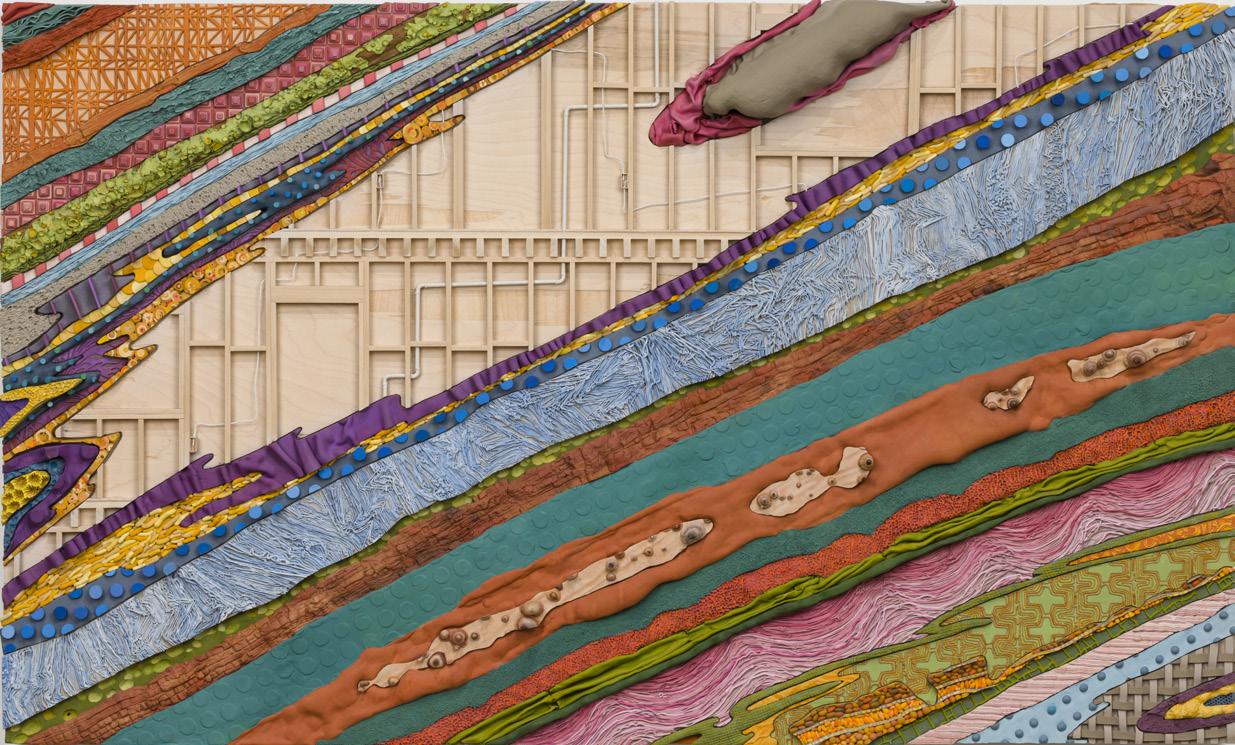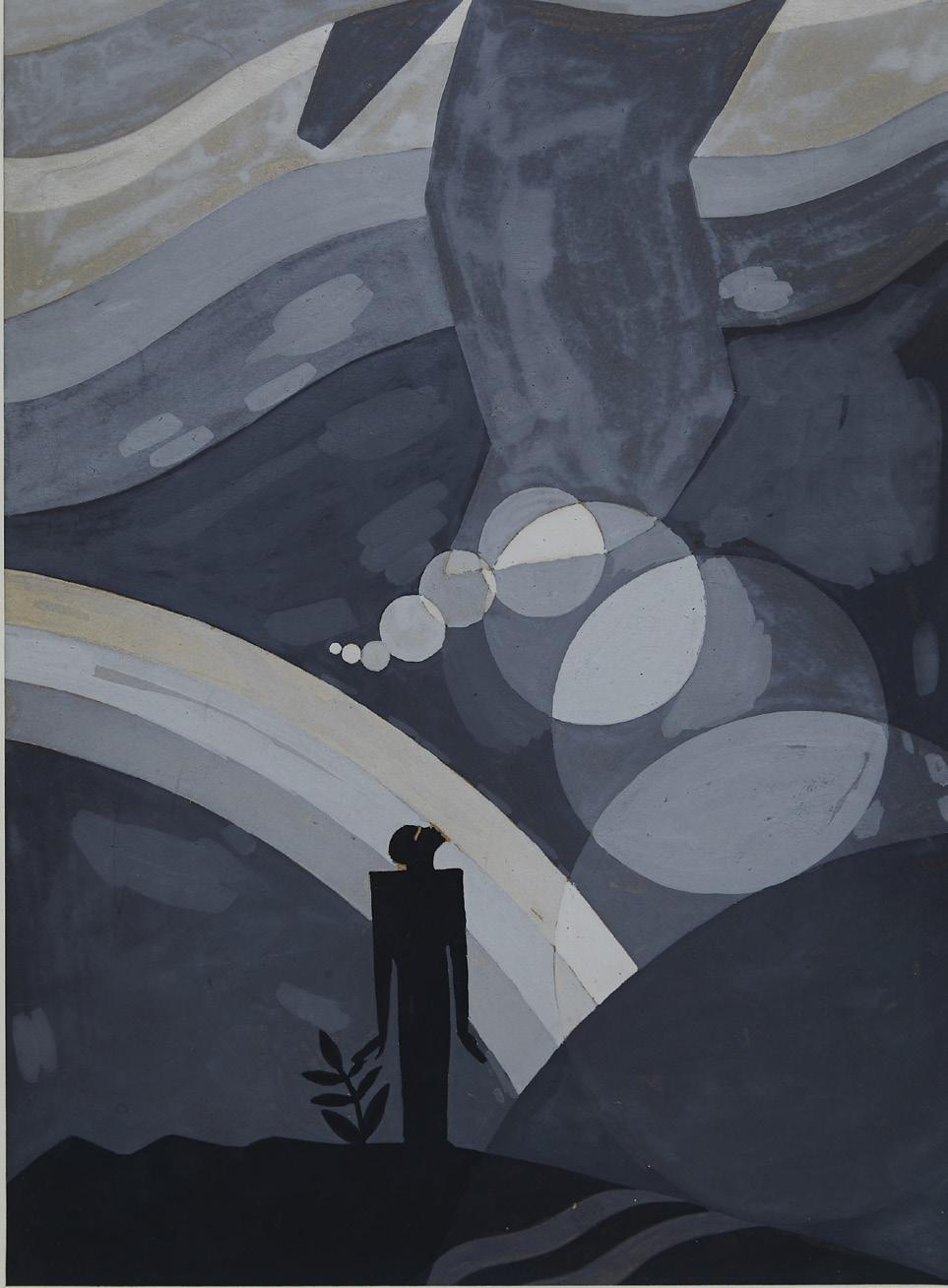SAVANNAH, GEORGIA — The Savannah College of Art and Design welcomes a new season of exhibitions at the renowned SCAD Museum of Art, uniting an international roster of emerging and established artists whose practices reflect vital conversations within contemporary art discourse. This season’s diverse slate of shows represents varied mediums, approaches, and contexts, and includes a major presentation of work by Roxy Paine, whose large-scale, multimedia sculptures examine intricate systems, from the biological to the geological to the industrial, ultimately engaging deeply existential themes of humanity and the natural world. SCAD MOA also proudly presents the first solo exhibitions in the U.S. for Anna Park, Maria Nepomuceno, and Shi Jinsong, whose practices each uniquely materialize the complexities and contradictions of culture within capitalistic societies, as well as the group show Aaron Douglas: Sermons in the museum’s Evans Center for African American Studies, which explores the Harlem Renaissance artist’s profound influence on creative practice today.
Many of SCAD’s top-ranked degree programs — including painting, photography, sculpture, fibers, illustration, animation, and architecture — are reflected in this season’s exhibitions and complementary events programming, demonstrating the museum’s continued mission to enrich the high caliber of education and cultural life for students, alumni, and the Savannah community and beyond.
“We are so excited to share these wonderful new exhibitions at the SCAD Museum of Art. This fall, we showcase a geographically diverse range of artists who create compelling works varying in media and approach. With an assortment of impressive solo exhibitions and thoughtful group shows, the museum will be buzzing with a dynamism that is sure to inspire creativity and wonder for our students and visitors alike.”
– Daniel S. Palmer, SCAD Museum of Art chief curator
Featured fall exhibitions at the university’s award-winning SCAD Museum of Art in Savannah include:
ROXY PAINE (b. 1966, New York), Sedimentary Lens, On view through Jan. 23, 2023
Throughout his decades-long career, Roxy Paine has investigated the tensions between human intention and the power of the natural world. The artist’s multifaceted practice includes large-scale, multimedia sculptures that examine complex systems, from the biological to the geological to the industrial. Through the expression of these interdependent systems, Paine’s work ultimately engages themes of time and decay, a crucial reminder of the hastening devastation of the earth at the hands of humanity and our own impending mortality. Sedimentary Lens presents recently created, precisely executed relief paintings akin to stratigraphic bisections that meld divergent references on the same picture plane. Commingled manifestations, including fungi, oil drums, and the surface of the moon, slip between abstraction and representation. The exhibition also presents Paine’s pixel paintings, intricate constructions that accumulate thousands of tiny nubs of paint to depict the macro and the micro, as well as the artist’s dioramas, meticulous windowed environments that mimic the format of natural history displays while complicating their function, ultimately illustrating humankind’s failures of control in the face of natural forces like death, decay, and entropy.
GISELA COLÓN (b. 1966, Vancouver, Canada), The Feminist Divine, On view through Jan. 2, 2023
Gisela Colón’s dynamic sculptures offer mutable, perceptual experiences through the refraction, reflection, and emission of light. Generated with advanced production methods such as carbon fiber casting meant for aerospace applications, Colón’s curvilinear forms emanate a seductive, iridescent glow, fluctuating in color based on environmental conditions and where the viewer stands in relation to the work. Colón coined the term “Organic Minimalism” to describe the dual condition of her work: reductive, yet active and seemingly alive. While situated within the lineage of minimalism, Colón’s practice refuses the stasis and rigidity of structure typical of work by her male predecessors, embracing the transformative and transcendent. Informed by the natural world and rich biodiversity of her home island of Puerto Rico, her work invokes the “feminine divine” as a method of creating space for underrepresented peoples.
ANNA PARK (b. 1996, Daegu, South Korea), Last Call, Sept. 21, 2022–Jan. 2, 2023
In her first solo museum exhibition in the U.S., Anna Park presents large-scale charcoal drawings with a formal dynamism that articulates the frenetic pace and chaotic iconographic landscape of the information age. Park’s monumental works expand the parameters of drawing to a level on par with history painting, simultaneously straddling the line between abstraction and figuration. She incorporates recognizable imagery from memes and other contemporary culture into her work yet complicates it with almost Cubist-like fragmentation. This elusiveness is reflective of the ways in which her dense black-and-white compositions convey a fraught emotional turbulence amid the uncertainty of our times, communicating the complexities and contradictions of American culture today.
MARIA NEPOMUCENO (b. 1976, Rio de Janeiro, Brazil), Dentro e fora infinitamente, On view through Dec. 26, 2022
Across decades, Maria Nepomuceno has developed a collaborative and generative relationship with a group of female artisans in northeast Brazil renowned for weaving carnauba palm straw, native to the region, into functional objects. Nepomuceno has experimented with this medium, inventing new shapes, patterns, and forms that incorporate traditional techniques while also integrating more unconventional materials such as beads, raw clay, ceramic, resin, and rope. Emerging through the evolution of this labor-intensive method, the resulting works oscillate between collage, painting, and sculpture. In Dentro e fora infinitamente, Nepomuceno’s first solo museum exhibition in the U.S., she presents woven structures that reflect the spirit of her practice, with references to Brazilian flora and fauna. Each work appears as its own complete and beautifully balanced ecosystem, made up of a seemingly endless and complex network of interconnected and overflowing elements.
Studies in Form, On view through Dec. 26, 2022
Studies in Form is a collaborative body of work by Seher Shah and Randhir Singh. Consisting of six portfolios with 121 prints in total, the series examines modernist architecture through the medium of the cyanotype, an early photographic process and precursor to the blueprint. Shah and Singh’s interdisciplinary approach to architectural history combines photography, printmaking, and drawing to isolate specific elements of buildings and analyze architectural principles of scale, materiality, and mass. By abstracting form, Shah and Singh scrutinize the built environment and offer a compelling expansion of the canon of modernism. Mining their personal archive, the artists culled photographs of concrete architecture constructed across multiple cities in the 1960s and 1970s. By fragmenting images of these buildings, Shah and Singh dissect their forms in an attempt to represent the experiential and poetic qualities of their spaces, reappraise their modernist social aspirations, and reflect their respective contexts.
SHI JINSONG (b. 1969, Wuhan, China), Waiting for a response which we might never get, Sept. 21, 2022–Jan. 2, 2023
Shi Jinsong’s first solo museum exhibition in the U.S., Waiting for a response which we might never get is a meditation on the human need for speed. Materializing the impact of rapid urbanization on traditional Chinese landscapes, Shi Jinsong transforms the gallery into an immersive indoor sculpture garden in which the artist’s “tree-motorbikes” idle amid mechanical bamboo. In these signature works, Shi Jinsong mutates the anatomy of machines and natural forms to create new variants, connecting ideas of growth and decay of the environment with production and waste of capitalistic society. The artist’s über-stylized bamboo sculptures hybridize the archaic and the futuristic, the analog and the digital, to express the simultaneously accelerating speeds of technological and artistic productivity across millennia. As society continues to produce, consume, communicate, and compete at a blistering pace, Shi Jinsong urges us to look back at what fuels us and to contemplate the future that awaits us if we stay in the race.
ALLISON SCHULNIK (b. 1978, San Diego, Calif.), Ominous, Crude Beauty, On view through Jan. 16, 2023
Haunting and rife with a macabre sense of foreboding, the mesmerizing stop-motion clay animations of Allison Schulnik are simultaneously brimming with compassion, humor, and hope. Akin to “moving paintings,” Schulnik’s animations are characterized by colorful biomorphic misfits that emerge from the physical nature of her painting style in which thick pigments transform into three-dimensional figures. Ominous, Crude Beauty brings together all the artist’s video works to date. Non-narrative and psychedelic in tone, they encourage close attention to motion and sound as they avoid linear narratives and didactic interpretations. In addition to the artist’s animations, the exhibition features a selection of Schulnik’s seductive impasto paintings, highly textured sculptures that bear palpable traces of the artist’s hand, and 131 drawings used to create the animation Mound (2011). Melding a deep sense of theatricality with intense emotional vulnerability, Schulnik’s honest, complex, and nostalgic work creates a dream space for us to contemplate creation, death, love, folly, and farce.
JOHANA MOSCOSO (b. 1981, Bogotá, Colombia), Entre sistemas invisibles, On view through Oct. 31, 2022
Entre sistemas invisibles presents a new body of textile work by SCAD graduate Johana Moscoso (M.F.A., sculpture, 2009) that unravels hidden systems of oppression in our daily lives. In the works on view, Moscoso hand-stitches vibrant layers of laser-cut fabric together using the traditional Mola technique, a reverse appliqué method originated by Indigenous Latin American communities in which layers of different colored cloth are sewn together, nearly invisibly, and then worked upon or cut away to reveal a design. Embracing beliefs held by the Kunas people, that evil spirits settle in the unworked spaces of the layers, Moscoso saturates each brightly colored textile panel with intricate embroidery, obscuring seams and structures. She dances salsa over each work with her bare feet covered in glue, simultaneously preparing the surface of the fabric for a metallic foil transfer as a final embellishment. For Moscoso, the artistic process is a mapping practice, tracing the artist’s and her family’s migratory journeys using the ancestral knowledge of stitching, embroidering, and dancing so integral to her personal and cultural histories.






























